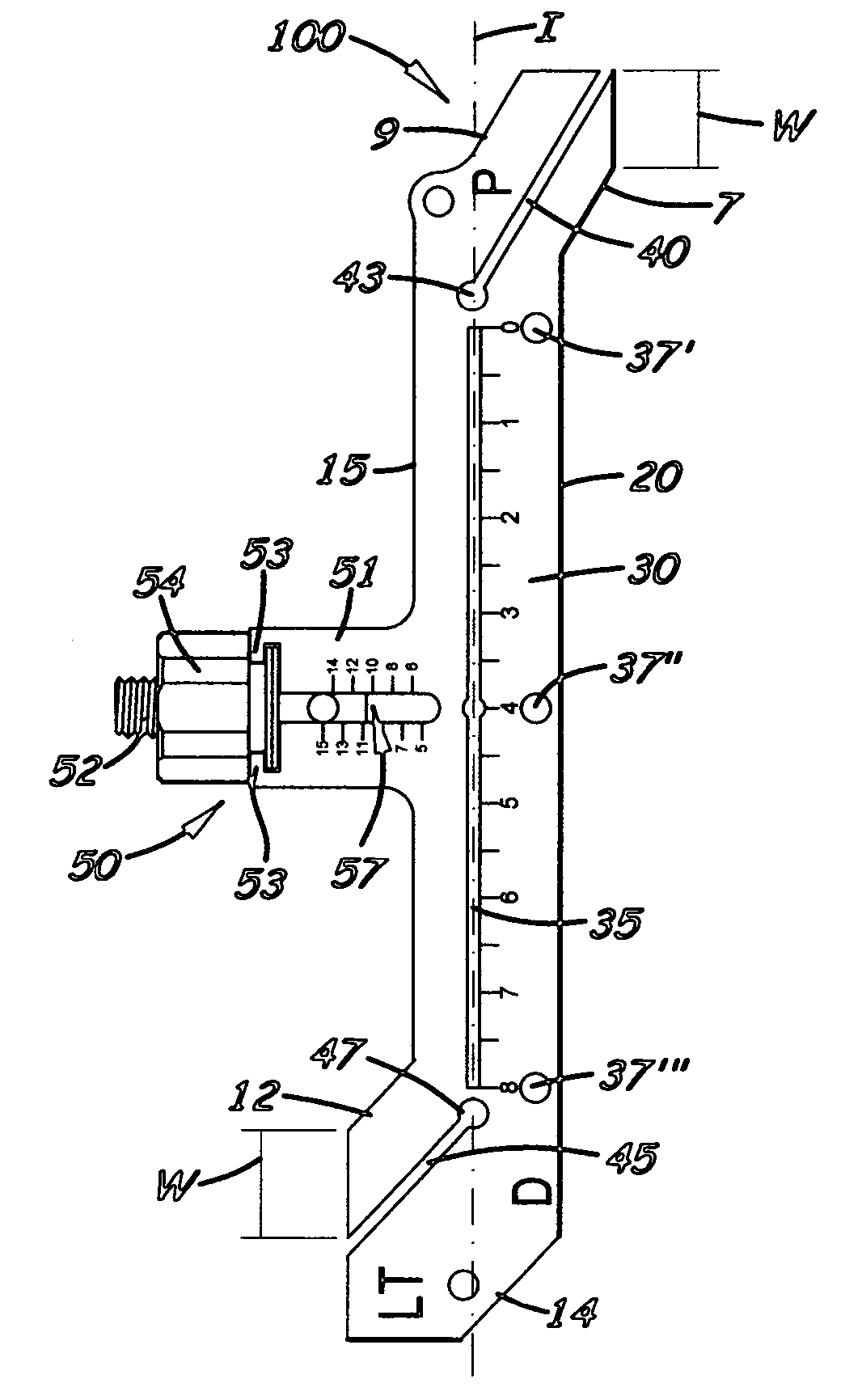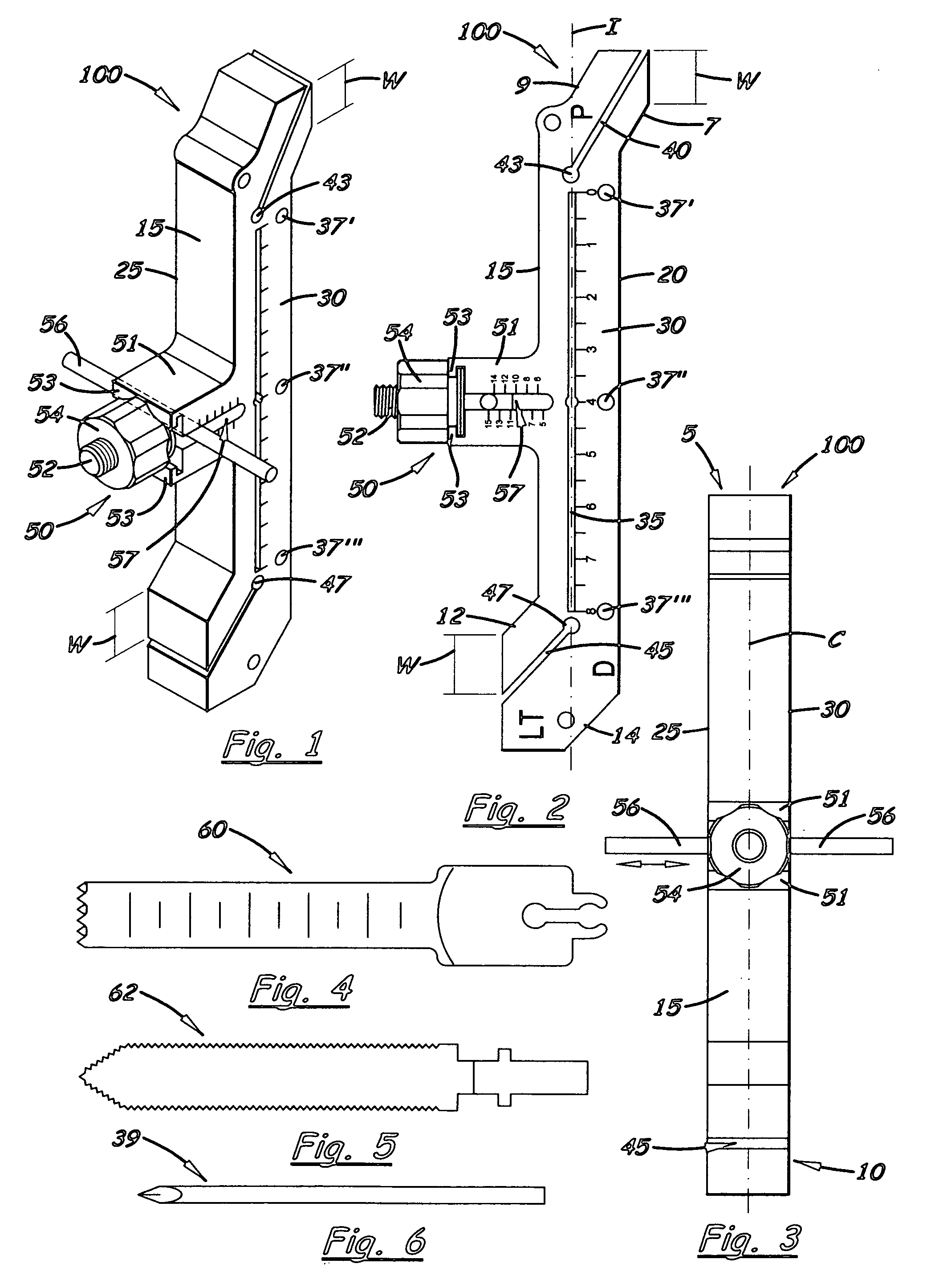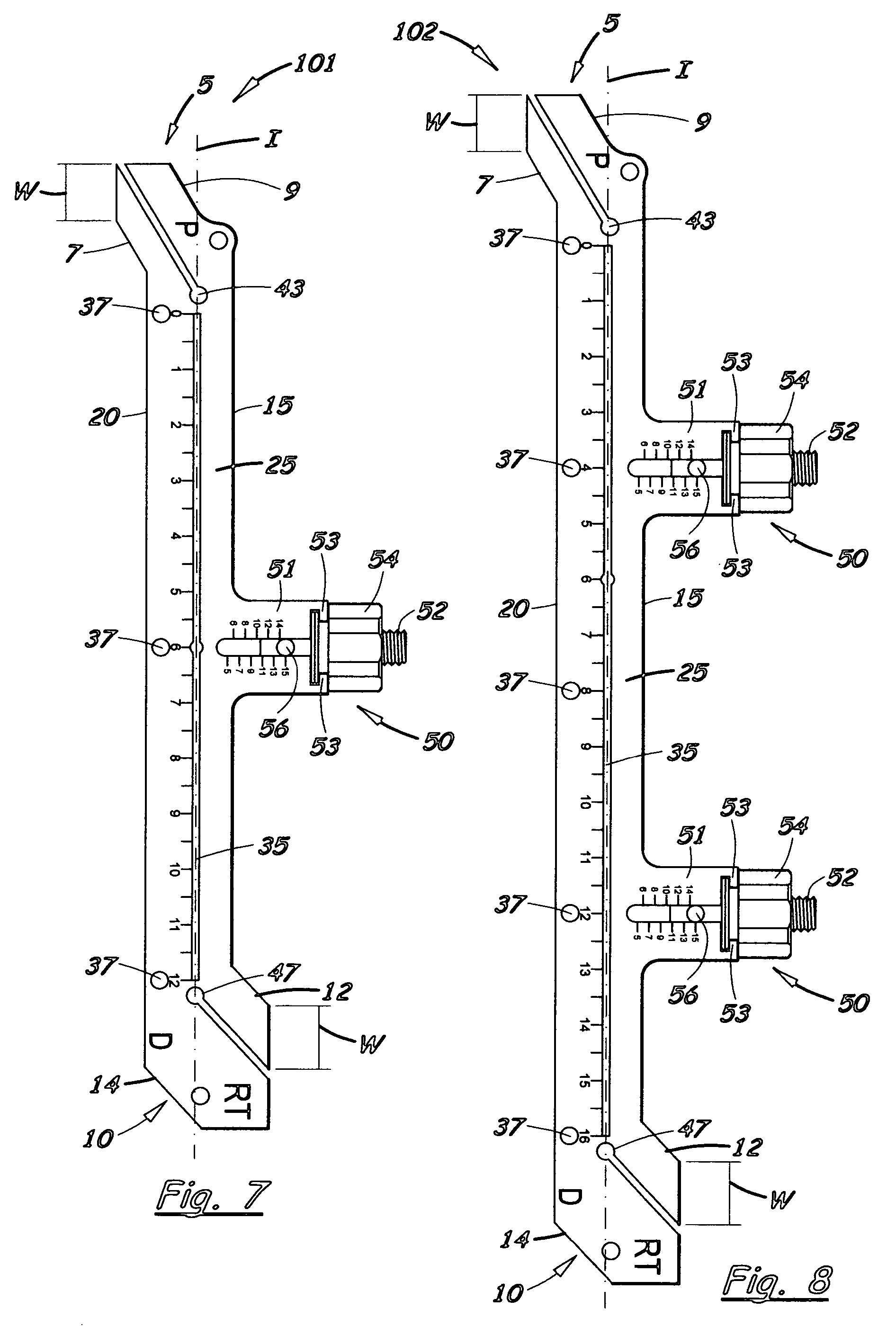Extended trochanteric osteotomy guide
a trochanteric osteotomy and guide technology, applied in the field of surgical guides, can solve the problems of osteolysis and prosthetic loosening, wear and wear, and increase the number of revision total hip arthroplasties, and achieve the effect of preventing intraoperative iatrogenic femoral fractures
- Summary
- Abstract
- Description
- Claims
- Application Information
AI Technical Summary
Benefits of technology
Problems solved by technology
Method used
Image
Examples
Embodiment Construction
[0035] Referring to the Figures, there are shown several, but not the only, embodiments of the invented surgical guide for an extended trochanteric osteotomy. In this Description and the Claims, the term “proximal” means toward the center / torso of the body, whereas the term “distal” indicates a point farther from the center / torso of the body. Other directional terms of reference used herein are: “anterior” meaning toward the front; “posterior” meaning toward the back; “superior” meaning toward the head / top; “inferior” meaning away from the head or toward the bottom; “medial” meaning inwardly from the side toward the midline of the body; and, “lateral” meaning outwardly from the midline of the body toward the side; “anterolateral” meaning situated or occurring in front of and to the side; “posterolateral” meaning situated or occurring in the back of and to the side; and “anteroposterior” meaning from the front to the back to the front. All positions and directions refer to the anatom...
PUM
 Login to View More
Login to View More Abstract
Description
Claims
Application Information
 Login to View More
Login to View More - R&D
- Intellectual Property
- Life Sciences
- Materials
- Tech Scout
- Unparalleled Data Quality
- Higher Quality Content
- 60% Fewer Hallucinations
Browse by: Latest US Patents, China's latest patents, Technical Efficacy Thesaurus, Application Domain, Technology Topic, Popular Technical Reports.
© 2025 PatSnap. All rights reserved.Legal|Privacy policy|Modern Slavery Act Transparency Statement|Sitemap|About US| Contact US: help@patsnap.com



